We’ve been busy this week showing off 50 books that every cult movie fan should have, so check out our previous entries here, here and here if you haven’t yet done so!
Couple of quick notes:
– These are not ranked in order of best to last, worst to best, or HOBGOBLINS to HALLOWEEN. This is just a collection of books you may want to take a look at. Below are titles 20-11, and we’ll be rolling out ten titles every day this week.
– Click the cover of the books to buy the goods, all the cool kids are doing it.
20. Bold! Daring! Shocking! True!:
A History of Exploitation Films, 1919-1959 (1999)
by Eric Schaefer
If you own one book about the early history of the American exploitation film, it should be this one. Eric Schaefer has compiled the most comprehensive history of the era of the exploitation road show that will probably ever be put together, and his continued influence on the academic approach to the subject is felt today. From the earliest of silent films to sex hygiene scare shorts to the nudie cuties, Schaefer delves into every minor subgenre with a rigor and attention to detail that is never less than fascinating, covering the production and distribution of a field from which most producers tried to hide their association. The only minor criticism is that it can be, at times, a bit dry, but that can be easily remedied by picking up a companion piece in the form of…. -P
19. A Youth in Babylon:
Confessions of a Trash-Film King (1990)
by David F. Friedman
You want showmanship in your guide to the sordid history of exploitation films? David F. Friedman, the late, great producer behind such influential works as BLOOD FEAST and TRADER HORNEE, has got enough showmanship in his autobiography for a dozen books. Friedman started off in the industry working with Kroger Babb, the sleazemonger behind MOM AND DAD, from whom he learned the fine art of separating people from their money via carny-like huckstering in the most ballyhoo-rific, boisterous of fashions, a technique he mirthfully transfers to his writing. Friedman’s fantastically entertaining recounting of his life story is endlessly readable, as Friedman is a master storyteller, peppering his tales with about 25% more adjectives than are really necessary to great effect. His tales of the independent production and distribution of the likes of SCUM OF THE EARTH and DAUGHTER OF THE SUN are impossible to put down, even if it’s not the most reliable narration in literary history. The only downside is that Friedman’s follow-up, “Kings of Babylon,” promised at the end of the book, never materialized. -P
18. Any Gun Can Play:
The Essential Guide to Euro-Westerns (2011)
by Kevin Grant
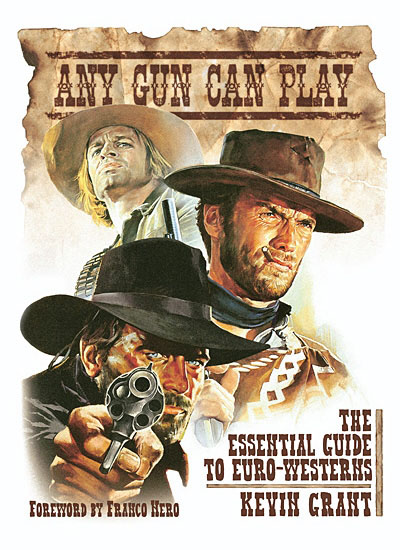
As a massive fan of Spaghetti Westerns, I’ve long yearned for a book that properly celebrates the genre’s development, while putting the themes into a wider cultural context. While Chrisopher Frayling’s Spaghetti Westerns: Cowboys and Europeans from Karl May to Sergio Leone gives a fine summary of the genre and its most notable films, and Thomas Weisser’s Spaghetti Westerns: the Good, the Bad And the Violent gives capsule summaries of hundreds of movies, they both pale next to the achievement of Kevin Grant’s lengthy, astoundingly researched book. Pulling from dozens of interviews with key figures from the Euro-western’s late 60s/early 70s heyday, Grant’s passionate writing wonderfully summarizes the major events and players involved, while expounding well beyond Leone or Corbucci. As essential as the title suggests. -D
For a full review of the book, click here.
17. Lee: A Romance (1998)
by Pamela Marvin
Here is an unusual thing: A biography of a great movie star written by his widow, who knew him since they were kids. Lee Marvin is quite possibly the single most masculine movie star of all time, representing to many an outsized cartoon of manliness; this book gives his life a shade of intimacy from the perspective of the woman who knew him best. Excerpts from Marvin’s WWII journals are here, as are plenty of on-set and behind-the-scenes Hollywood details. Appearances are made by figures as different as Charles Bronson, Ernest Borgnine, Paul Newman, Jack Nicholson, William Hurt, Menahem Golan, John Boorman, and Jack Palance. You get the classic anecdote of Lee Marvin, an avid fisherman, turning down the role in JAWS because “Fish don’t kill me. I kill fish.” Or what he said, admiringly, of what De Niro went through to make RAGING BULL: “Jesus! If I ever get a call from Scorsese I’m hiding until he’s off the phone!” You get a look at the toll of the boozing and the affairs and the cancer that took him out way too early at 63. You get more detail than you may have wanted about the landmark paternity trial that dominated a large chunk of Marvin’s life.
And most of all, this book reveals a surprising tenderness, and a truly great love story, as promised in the title: Lee and Pamela met when she was very young and he was already a war hero. He became a plumber, and then an actor. He moved to New York and started to find success in movies. Pamela married another man and moved to New Jersey. Eventually they reconnected when she moved back home and he came to visit his ailing father. And then, this wonderful passage: “It was nine or ten o’clock when a huge black limousine drew up and Lee and his driver Tony stepped out. Lee flung open my kitchen door and with one push slid his suitcase all the way into the living room. He stood in the doorway and said, ‘You know I’ve come to get you, don’t you?’ Tony came in, we all had pie, then Tony clambered back into the limo and drove away.” One day in my own life I hope to be able to tell a story nearly so lovely. -J
For further reading: Dwayne Epstein’s recent (and very good) biography Lee Marvin: Point Blank provides a detailed look at the actor’s life and films as well. Read a full review for the book here.
16. Portable Grindhouse:
The Lost Art of the VHS Box, Vol. 1 (2009)
by Jacques Boyreau
PORTABLE GRINDHOUSE is a time machine, a gateway to instant nostalgia with auto-tracking included free of charge. Just like the shelves at the video store, classics are mixed in with rarities: SLITHIS next to THE LIFT, SLAVEGIRLS FROM BEYOND INFINITY next to DELIRIUM. This is all box art and free of commentary, this is designed to get lost in. So what the hell are you waiting for? Grab this book, then go and support your local video store. Get lost. – G
15. LAST HOUSE ON THE LEFT:
The MAKING OF A CULT CLASSIC (2000)
by DAVID A. SZULKIN
Wes Craven’s THE LAST HOUSE ON THE LEFT is one of the high water marks of grindhouse cinema; a film that is both full of dramatic tension and complete terror. It’s a masterpiece that Craven has yet to top (or even come close to for that matter). Clearly a fan, author David Szulkin takes you behind-the-scenes of the making of a low-budget film that went on to have a long history of fake sequels and remakes. Szulkin has extensive interviews with nearly everyone associated with the film and after reading it, you quickly come to the realization that nobody really had any idea what the hell they were doing. This is a case of all the pieces coming together, with brutality, murders, and a bit of torture for good measure. If I had one complaint, it’s that Szulkin hasn’t returned to writing since this was published in 2000. It would be great to see him turn his attention to another piece of sleaze and/or tease. – G
14. Foxy: My Life in Three Acts (2010)
by Pam Grier
Writing about Pam Grier for this site, I called her “history in motion,” the first and best female movie action hero. Some might think I’m being chauvinist by delineating a difference between female and male action heroes, but Pam’s femininity absolutely matters. In action films before Pam Grier, women were by and large either damsels in distress or femme fatales. They never got to be full-on shitkickers, which is what Pam definitely was. At the same time, she was lovely and emotional and very, very, very female. Her career was phenomenally important to American movies, and so far there has been no clear successor to what she represented. She’s a true original. Which means that her autobiography is an automatic must-read. It covers her life before movies, and goes forward, beyond those years in the 1970s when she made her world-changing action films. There’s a lot of talk about family and relationships, which I don’t generally think is my business to know, but it does form a portrait of the thoughtful person behind the badass image. If you love movies, I don’t even understand why you wouldn’t rush to read a book by Pam Grier. -J
For further reading: Jewel Shepard has authored (or co-authored) two highly entertaining books about the journeys of women though the exploitation industry, her biography IF I’M SO FAMOUS, HOW COME NOBODY’S EVER HEARD OF ME? and the interview compilation INVASION OF THE B-GIRLS. Among those interviewed in the latter is the great Mary Woronov, whose own autobiography, SWIMMING UNDERGROUND: MY YEARS IN THE WARHOL FACTORY is (obviously) more focused on her Warhol-era work, but still a memorably seedy, and highly honest, work.
13. Sleazoid Express: A Mind-Twisting Tour
Through the Grindhouse Cinema of Times Square (2002)
by Bill Landis and Michelle Clifford
For those – like myself – who never got to live through the glory days of the 42nd Street Grindhouses, there might be a temptation to glamorize the movie dens and filmgoers who sustained the exploitation films of the 70s and early 80s. That glamour is decisively washed away in Bill Landis and Michelle Clifford’s ode to sleaze, which manages to both celebrate and decry the junkie and derelict filled theaters that played the mondo, martial arts and slasher flicks we all hold dear. At times overwhelmingly grimy, there’s still plenty of information here on the notable films of the period – and from the refreshingly frank perspective of those who lived through it. -D
For further reading: Landis’s “Sleazoid Express” zine, which Landis created, isn’t the only periodical to have made the leap to a larger format. Robin Bougie’s excellent CINEMA SEWER zine has been reprinted in four volumes, Stefan Jaworzyn’s SHOCK XPRESS has three (though they’re sadly out of print), Steven Puchalski’s SLIMETIME reprints his pre-SHOCK CINEMA zine of the same name, and Mike White’s great CASHIERS DU CINEMART mag has been partially restored to book form via the IMPOSSIBLE FUNKY collection. The grand history of cult movie mags is profiled in the new release XEROX FEROX: THE WILD WORLD OF THE HORROR FILM FANZINE, and none of these volumes should be passed up.
12. Herzog on Herzog (2003)
by Paul Cronin
Werner Herzog is a man who is used to combining myth and reality to great success in his films, but he’s just as interested in myth-making when it comes to himself – particularly in his relationship to his creative work, and his volatile partnership with the late Klaus Kinski. This collection of interviews covers much of Herzog’s diverse career, but also gives necessary insight regarding his views on directing, relationships and life. Few directors possess the insight and charisma to make a book of interviews so continually fascinating, but for those who are interested in the mind of one of the most important directors living (and that should be all of you), it’s absolutely essential. -D
11. The Monster Show:
A Cultural History of Horror (1993)
by David J. Skal
My word may or may not mean anything to you, but you would have to take it on faith when I tell you that I have read many, many cultural overviews of the horror genre and that this is far and away the best one of the many, many I have read. David J. Skal is a true authority on horror films, having appeared on numerous DVD commentaries of classic movies, and having produced many documentaries on the history of horror. He has an awesome ability to connect horror trends with the major issues and events of the eras in which they were most popular. For example, the AIDS scare of the 1980s was reflected in the return of vampire films – not to mention slasher films, where sex often resulted in death. It’s this kind of fascinating historical perspective, coupled with Skal’s detailed research and familiarity with truly amazing characters such as sideshow performer turned horror director Tod Browning, that makes this book so superlative. By the time this book brings up Michael Jackson’s cosmetic saga in the context of horror films, it’s clear that this is an essential text for anyone who loves horror films, their sociological implications, and just plain interesting reading. -J
Click here for part 5: Picks 10-1
SEE YOU ON FORTY DEUCE,
DAILY GRINDHOUSE
FOLLOW US ON TWITTER @DAILYGRINDHOUSE
- [THE BIG QUESTION] WHAT’S YOUR FAVORITE FEMALE ENSEMBLE IN MOVIES? - July 22, 2016
- [IN THEATERS NOW] THE BOY (2016) - January 24, 2016
- Cult Movie Mania Releases Lucio Fulci Limited Edition VHS Sets - January 5, 2016

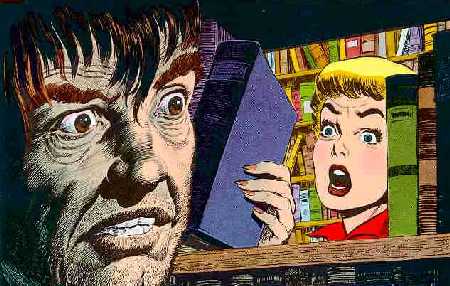
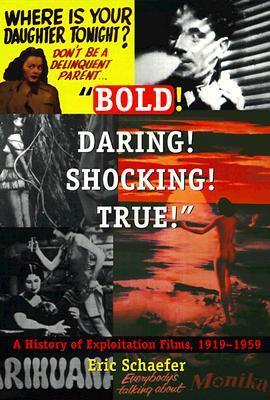
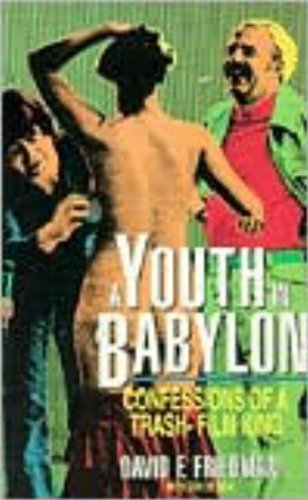
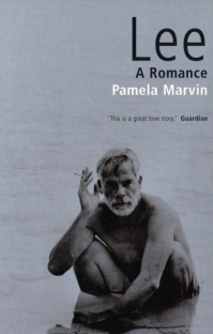
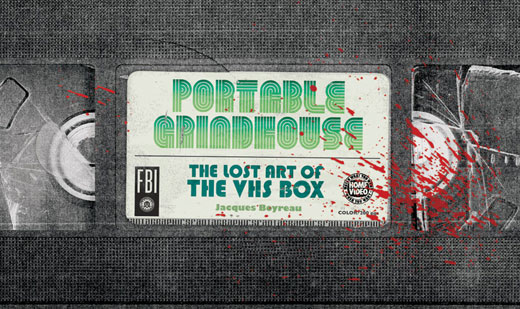
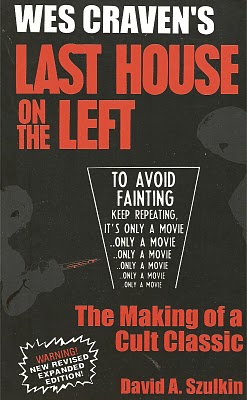

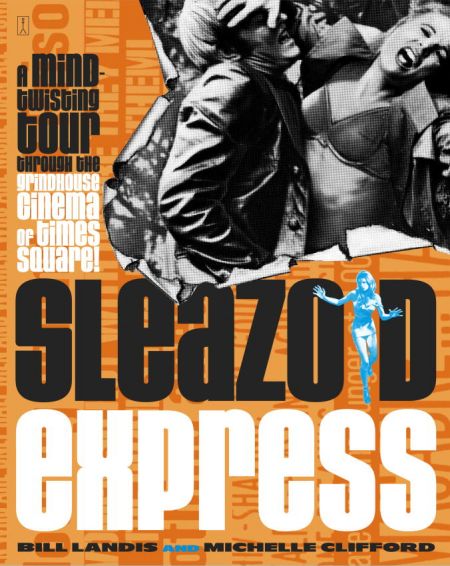

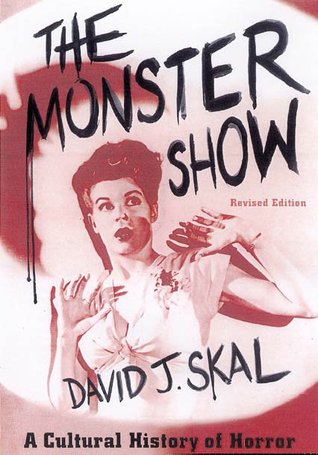




No Comments